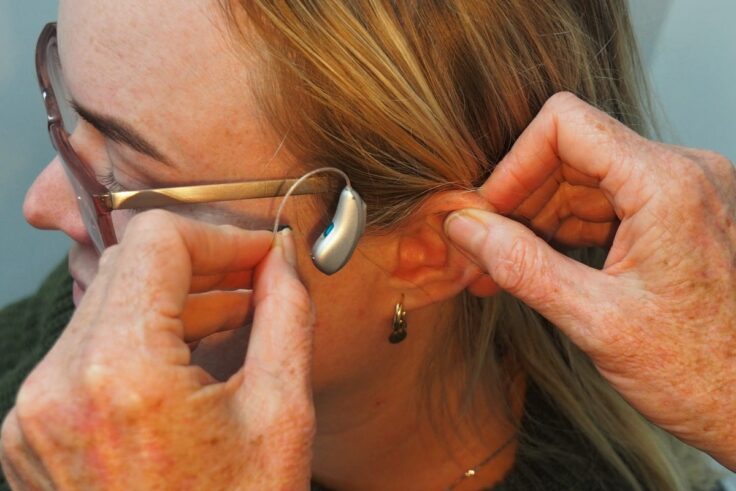How To Choose The Correct Hearing Aid Dome

A hearing aid dome is a small detachable piece on the end of your hearing device, which funnels sound directly into your ear canal. Here’s all you need to know about it.
If you’re a regular hearing aid user, you’re probably familiar with the term hearing aid dome. It’s an important part of your hearing aid, so you need to know what it is used for, the different types and sizes, and how you can replace them.
If your hearing device fits you properly, you won’t even notice that you’re wearing one. That’s why fitting hearing aids is an important part of the process of purchasing a pair.
Read on to learn more about choosing the right hearing aid dome size so that you can wear your device with ease.
What Are Hearing Aid Domes Used For?
If you haven’t seen one before, hearing aid domes are soft, little bell-shaped pieces of plastic that come with your behind-the-ear (BTE) or receiver-in-the-ear (RIE) hearing device.
The dome attaches to the tubing on the hearing aid and fits easily inside your ear.
It helps direct the amplified sound from your hearing aid into your ear canal. It also helps hold the tube in place and create a seal.
This will help you detect greater sound and frequency, with less unnecessary noise.
However, note that hearing aid domes don’t have one size that fits everyone. That’s why it’s important to work with your hearing care provider so you can find the appropriate type of dome that’s right for you.
Hearing aid domes come in a huge range of sizes and types, so they must fit correctly for maximum comfort.
Types Of Hearing Aid Domes
Hearing aid domes usually come in three styles, each with its own purpose, advantages, and drawbacks:
1. Open Hearing Aid Domes
Open domes have openings or holes to allow some natural noise to filter through to the ear canal. This helps lower frequencies dissipate, which helps improve the quality of the sound.
They’re perfect for those with mild to moderate hearing loss. This type of hearing dome prevents occlusion, where your voice sounds as if it’s being echoed back to you.
However, open domes weaken the amplification of bass sounds. This type of hearing device often needs more power because some sounds leak out from the vents.
Note that feedback noises can be a problem for those with moderate hearing loss, so make sure you talk to your hearing specialist for different options or refitting.
2. Closed Hearing Aid Domes
This type of dome blocks more of the ear canal than open domes. They also help amplify low-frequency sounds and are best for those with moderate hearing loss.
Closed domes are also known as vented or tulip domes. They feature less venting, which is useful to amplify sounds.
They also decrease the intensity of higher frequencies, which is why they’re great for people with moderate hearing loss.
3. Power Hearing Aid Domes
Power domes block the entire ear canal and form a complete seal. They offer the best results for people with severe hearing loss.
Because they completely seal the ear canal, they provide the best amplification with very few sound leaks.
However, they significantly increase bass and lower the sharpness of sounds. They also cancel feedback noises.
Selecting The Proper Size Of A Hearing Aid Dome
Once you choose the right type of hearing aid dome, it’s time to choose the right size. Domes usually come in various sizes, and since everyone’s ears are different, you should get the right fit for you.
Your hearing instrument specialist who fits your hearing aid should pick the right dome size and ensure it is the right fit.
Keep in mind that the dome should be slightly larger than the patient’s ear canal to seal it. However, there shouldn’t be too much pressure on the ear’s skin as it will cause discomfort and redness to the ear.
Also, if your dome is too large, voices may sound too deep and the dome could get lodged in your ear.
If it’s too small, it will be too easy to take it in and out, it won’t provide the sound quality you need, and it may fall out on its own.
Note that a dome that’s the right fit should make a light rustling noise when it’s inserted or removed.

Final Thoughts
Learning about the types of hearing aid domes and how to choose the right size for you it’s important to ensure you’re getting the best product for your needs.
Don’t be nervous about changing your hearing aid domes because they should be changed every 1-2 months, or when your hearing care professional recommends.
Replacing your hearing aid dome means your device will continue to work properly.